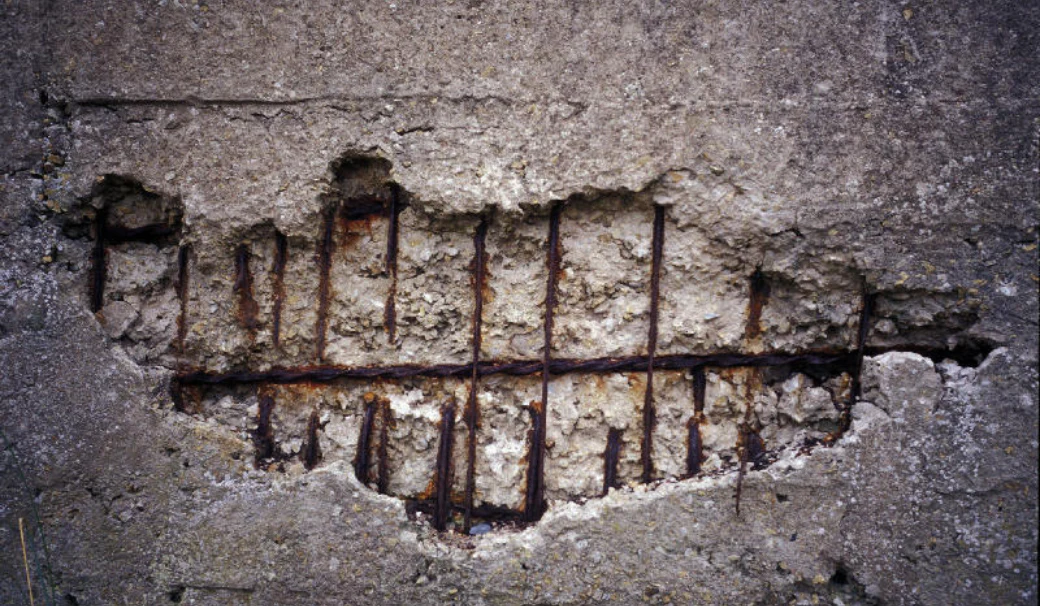
Concrete Spalling: What is it and Why is it Bad?
Concrete, a ubiquitous construction material, is known for its strength and durability. However, over time, even concrete can succumb to a phenomenon known as “spalling.”
In this blog, we will learn what concrete spalling is, its adverse effects, how to identify it, and most importantly, how it can be repaired.
Introduction
Concrete is the backbone of modern construction, used in everything from skyscrapers to sidewalks. It’s prized for its resilience, but it’s not invulnerable. One of the challenges it faces is spalling. But what exactly is concrete spalling?
What is Concrete Spalling?
Concrete spalling is a condition where the surface of concrete begins to deteriorate, often in the form of chipping, cracking, or flaking. It’s typically caused by a combination of factors, including exposure to moisture, freeze-thaw cycles, chemical reactions, and physical wear and tear. Spalling can affect both the appearance and structural integrity of the building.
What are the Impacts of Concrete Spalling?
Concrete spalling is not merely a cosmetic issue; it can have far-reaching and detrimental effects on both the appearance and structural integrity of concrete structures.
Aesthetic Deterioration
The most immediately noticeable effect of concrete spalling is its impact on aesthetics. Spalling causes the surface of concrete to deteriorate, leading to the formation of cracks, chips, and flakes.
These unsightly blemishes mar the visual appeal of buildings and structures, giving them a weathered and neglected appearance. In highly visible areas, such as facades of commercial buildings or public spaces, spalling can significantly diminish the overall aesthetic quality.
Structural Compromise
Beyond its aesthetic implications, concrete spalling poses a serious structural risk. When the surface layer of concrete deteriorates, it exposes the inner layers to environmental stressors.
One of the most concerning consequences is the corrosion of embedded steel reinforcement. Moisture ingress, a common contributor to spalling, can lead to rust formation on the steel, causing it to expand and further deteriorate the surrounding concrete.
This process weakens the structural integrity of the affected area, potentially compromising the safety of the entire structure. In severe cases, spalling can necessitate extensive and costly repairs to restore structural stability.
Reduced Lifespan
Concrete structures are designed to endure for decades, often surpassing a century when properly maintained. However, the presence of spalling, if left unaddressed, significantly shortens the expected lifespan of these structures.
Premature deterioration due to spalling leads to the unnecessary consumption of resources and an increased burden on both the environment and construction budgets. Addressing spalling in a timely manner is not only essential for preserving the longevity of concrete structures but also for minimizing the overall environmental impact.
How Do You Identify Concrete Spalling?
Identifying concrete spalling is crucial for timely intervention. Here are some common signs to look out for:
Surface Flaking and Cracking
The most apparent sign of spalling is the presence of flakes or cracks on the concrete surface. These may start as minor blemishes but can progress to larger, more severe areas of damage if not addressed.
Rust Stains
If you notice rust stains on the surface of concrete, it could be a sign that embedded steel reinforcement is corroding due to moisture ingress—a common contributor to spalling.
How Can Concrete Spalling Be Repaired?
Addressing concrete spalling promptly is crucial to mitigate its effects and restore the structural integrity of the affected area. Repairing spalling involves several key steps:
Surface Preparation
The damaged concrete surface is carefully prepared by removing loose or deteriorated material. This may involve chipping away damaged portions and creating a clean, stable base for repairs.
Repair Material Application
Specialized repair materials, such as repair mortars or polymer-modified resurfacing compounds, are applied to the prepared surface. These materials adhere to the existing concrete and restore its integrity.
Finishing and Blending
The repaired area is finished to match the surrounding concrete, ensuring a seamless appearance. This includes blending textures and applying coatings or sealants to protect against future damage.
Preventative Measures
To extend the lifespan of the repaired area and prevent future spalling, preventative measures such as waterproof coatings and corrosion inhibitors may be applied.
In conclusion, concrete spalling often is a detrimental condition that affects both the appearance and structural integrity of concrete structures. Identifying and addressing spalling promptly is essential to mitigate its effects and preserve the longevity of concrete assets.
Contact MJ Engineering Projects today to learn more about our specialized concrete spalling repair services and how we can provide effective solutions for your concrete spalling concerns.



